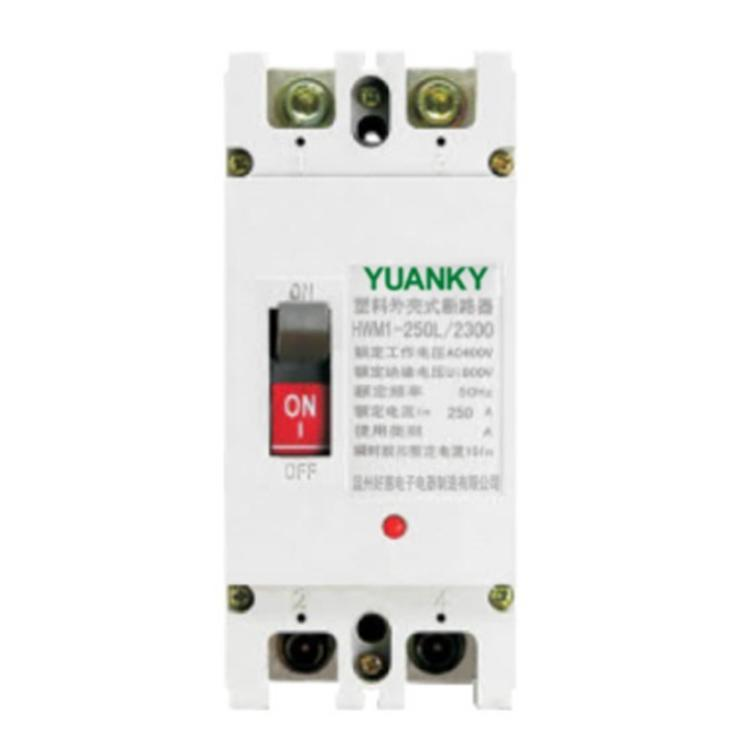MCB vs MCCB: 5 Key Differences You Must Know
What Is an MCB ?


A Miniature Circuit Breaker (MCB) is an automatically operated electrical switch designed to protect electrical circuits from damage caused by overcurrent or short circuits. MCBs are widely used in residential, commercial, and light industrial environments. They typically handle currents up to 100–125 amps, are compact, and feature fixed thermal-magnetic trip characteristics categorized as B, C, or D curves to accommodate different types of loads. MCBs are usually mounted on DIN rails for easy installation and replacement. Their interrupting capacity generally ranges between 6 to 15 kiloamperes (kA).
What Is an MCCB ?


A Molded Case Circuit Breaker (MCCB) provides a higher level of protection compared to MCBs, designed to handle higher currents and more demanding industrial applications. MCCBs are suitable for industrial power distribution, motor protection, and main power panels. They support adjustable trip settings (thermal, magnetic, or electronic), allowing fine-tuning to the specific protection requirements. MCCBs typically handle currents ranging from 16 amps to 1600 amps or higher, with interrupting capacities often exceeding 15 kA, up to 100 kA or more. Unlike MCBs, MCCBs are bulkier and mounted in electrical panels rather than on DIN rails.
Why Knowing the Difference Matters
Selecting the correct circuit breaker type is critical for safety, system reliability, and compliance with electrical standards. Using an MCB where an MCCB is required (or vice versa) could lead to equipment damage, fire hazards, or costly downtime. Understanding the differences helps electricians, engineers, and facility managers make informed decisions tailored to their specific application needs.
MCB vs MCCB: 5 Key Differences
When comparing MCB vs MCCB, it’s essential to understand the five key technical and functional differences that set them apart. These include their current rating and application range, interrupting capacity, trip characteristics, physical size and installation method, and cost versus usage scenarios. Knowing how these factors differ will help you choose the right circuit breaker for your specific electrical system—whether it's a residential setup or an industrial power network.
Difference 1: Current Rating & Typical Applications
l MCB: Suitable for currents up to 100–125 A, typically used in residential homes, offices, and light commercial setups. MCBs protect branch circuits such as lighting and small appliances.
l MCCB: Handles much larger currents, from 16 A to 1600 A or more, used in industrial plants, main distribution boards, motor control centers, and large commercial installations.
Difference 2: Interrupting (Breaking) Capacity
l MCB: Interrupting capacity usually up to 6–15 kA at rated voltage, which is adequate for typical residential fault levels.
l MCCB: Designed for much higher fault currents, often ranging from 15 kA up to 100 kA or more, which is necessary for industrial environments with large fault potential.
Difference 3: Trip Characteristics and Adjustability
l MCB: Comes with fixed trip settings based on curve types (B, C, D). These curves define how quickly the breaker trips under overload or short circuit conditions. MCB trip settings cannot be adjusted.
l MCCB: Provides adjustable trip settings including thermal (overload), magnetic (short circuit), and sometimes electronic trip units. This allows customization to protect specific equipment or coordinate with other protective devices in the system.
l cMCB: Compact and lightweight, designed for DIN rail mounting inside consumer units or distribution boards. MCBs are easy to replace and typically have a manual toggle switch.
l MCCB: Larger, heavier, and enclosed in a molded insulating case, usually installed in panelboards or switchgear. MCCBs may support remote operation (such as shunt trips or motor operators) for enhanced control and safety.
Difference 5: Cost & Use Case Considerations
l MCB: More cost-effective and easy to install; ideal for small circuits with limited fault current risk. Often chosen for residential wiring and smaller commercial buildings.
l MCCB: Higher upfront cost but offers greater protection and flexibility for complex, heavy-duty industrial power systems. Common in factories, data centers, and large-scale power distribution.
Summary Table
Feature | MCB | MCCB |
Current Rating | Up to 100–125 A | 16 A to 1600+ A |
Interrupting Capacity | 6–15 kA | 15–100 kA or higher |
Trip Settings | Fixed (B, C, D curves) | Adjustable (thermal, magnetic, electronic) |
Size & Mounting | Compact, DIN rail | Larger, panel mounted |
Remote Operation | No | Yes (optional) |
Typical Applications | Residential, light commercial | Industrial, commercial power distribution |
Cost | Lower | Higher |
Conclusion
Both MCBs and MCCBs play vital roles in circuit protection. MCBs excel in simple, low-current applications with fixed protection needs. In contrast, MCCBs provide customizable, high-capacity protection crucial for industrial environments. Proper selection ensures safety, reduces downtime, and complies with electrical codes.
For dependable electrical protection, YUANKY’s MCB and MCCB products deliver superior durability, precise trip performance, and versatile applications across residential, commercial, and industrial environments. Engineered to ensure optimal safety and reliability, YUANKY circuit breakers help prevent overloads and short circuits, providing you with peace of mind and uninterrupted power. Trust YUANKY for high-quality circuit protection solutions tailored to your needs.
Welcome to learn more or contact us at Contact Us for professional support and product information.
FAQs
Q1: Can an MCCB replace an MCB?
Technically yes, but it is usually impractical due to size and cost. MCCBs are designed for larger loads and settings.
Q2: Do MCCBs support remote tripping?
Yes, many MCCBs come with optional remote trip coils or motor operators.
Q3: Are MCCBs always better than MCBs?
Not necessarily; it depends on the application. For light loads, MCBs are efficient and cost-effective.




















